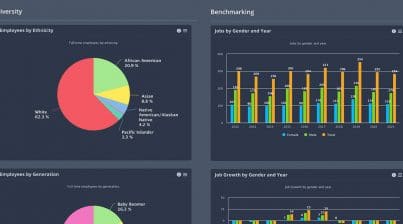It’s an exciting time in the world of HR. Long considered unscientific and less valuable than other departments, HR is entering a new epoch. As we become more focused on data-driven decision making, HR workers are finding their roles evolving into leadership positions, their new insights powering positive changes in their organizations.
One of those changes is the shift from “human resources” to “people operations.” But does this change go beyond semantics? What is the difference between traditional HR and this new model? Employee Cycle is here to help answer your questions about how HR is developing.
People Operations: Strategic And Results-Oriented
People Operations is different from traditional HR in its orientation. Whereas traditional HR focused on legal, ethical, and departmental compliance, People Operations is focused more on innovation and results. While it is built on traditional HR practices, it is much more dynamic and active, rather than reactive like traditional HR has been. In general, these differences can be defined through three big goals of People Operations:
To be more transparent.
One criticism employees have leveled at HR in the past is that HR is isolated from other departments and doesn’t communicate well or often, but this is changing. To help increase transparency, and to help make the importance of legal compliance and accountability more accessible to employees, People Operations relies on multi-discipline teams. Workable, a company that makes recruitment platforms for HR, explains that the goal of People Operations is to “increase transparency throughout the organization. That’s why people team members come from various backgrounds and departments.”
By drawing on members from other departments, People Operations feels more inclusive, but also is more inclusive. These teams can better respond to employee needs by drawing on their diverse skill sets. For instance, a member from IT services can ensure all employees have access to the correct technology to perform their jobs, while someone from security may be responsible for a presentation on safety protocols.
To become more strategic.
Historically, HR departments have sometimes felt like a series of checklists focused on completing specific, repetitive tasks (such as reports or payroll). These are important tasks for sure, and People Operations still manages these responsibilities. However, People Operations goes beyond this to home in on what is necessary for growth, efficiency, and success.
People Operations starts by focusing on an organization’s objectives and setting goals for reaching those objectives. Many of these goals will be built around providing employees with what they need in order to reach those goals. This may be as simple as making company-wide goals clearer to employees, or it may be providing better training or technology to improve efficiency. Or it may be incentivizing success through bonuses or other rewards. Regardless, People Operations is about the human aspect of reaching these goals.
To be proactive.
Another big shift from traditional HR, People Operations takes the initiative instead of waiting to react. “Traditionally, HR is responsible for dealing with issues once they occur. For example, they’ll open a new job when an employee leaves,” says Workable. “On the other hand, people operations teams hold a proactive approach, aiming to create a healthy workplace with strategic hiring plans in place.” This may mean using better hiring metrics, testing new recruiting methods, or improving retention.
Why Is HR Changing This Way?
In the traditional office model, a manager’s function is to drive output by managing employees. This might mean helping maintain workflow, urging greater productivity, or any number of hand-on approaches to ensure workers get work done. In many ways, the responsibility for productivity is removed from employees in this model.
However, today the office environment is very different. As we shift to a results-based model, where employees are rewarded for what they accomplish, there is less need for the traditional kind of manager since employees can manage their workflow themselves (and have the incentive to do so). This does not mean that managers are disappearing, but rather their jobs are changing in response to changes with workers. Now, a manager’s job is more about ensuring employees have the resources necessary to be successful, and then stepping back to let them succeed.
Another large part of this shift is a result of changes in the way businesses view workers. In a world where products can be hot one minute and worthless the next, where innovation and reinvention are the names of the game, solid employees who can consistently deliver outstanding performance are becoming more reliable investments than the products and services they are selling. Businesses are recognizing that retaining an experienced team of high performers is central to success. As Cody Bess of PopRouser explains, to “refocus on employees…as the value driver of the organization, is to continuously experiment with and improve processes that drive HR functions (which are historically administrative in nature), and offer services to [employees] to improve their quality.” In other words, investing in employees is seen as an investment in the company.
People Operations is really a blend of these two philosophies. While neither philosophy is wholly new for HR, its these new orientations and their methods of implementation that make up People Operations. Laurel Farrer of Forbes puts it this way: “People Ops aims to understand employees holistically as individual contributors while the traditional HR mindset views them more as a resource to be calculated and managed for efficiency.” It is, in effect, putting the human back into Human Resources.
Are you ready to see your people data all in one place? Then check out our HR analytics dashboard to bring all your people metrics into one place. Click to schedule a demo and learn more.












